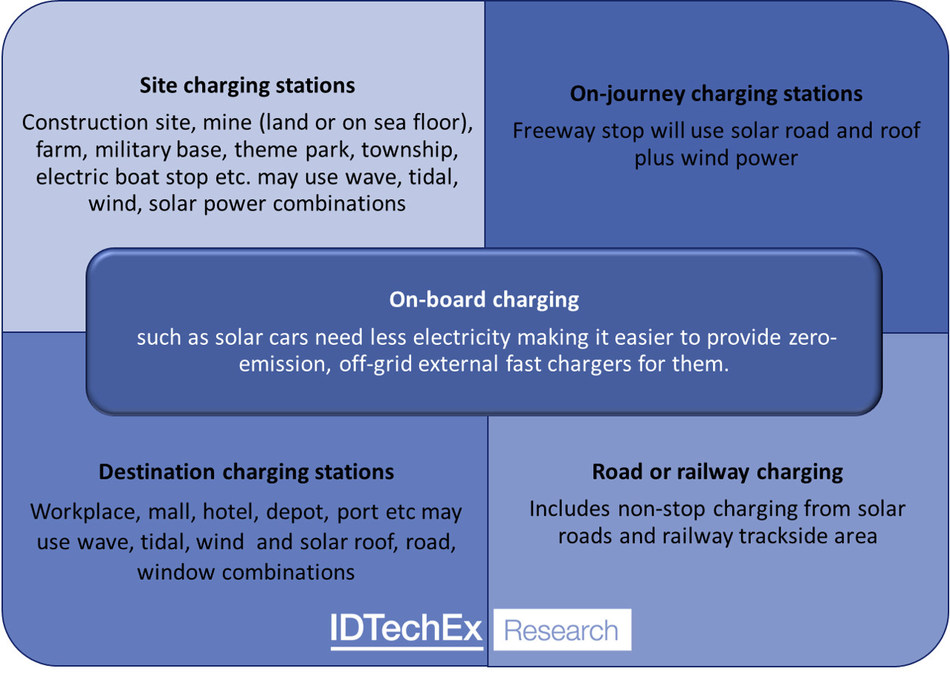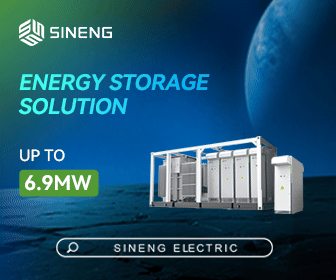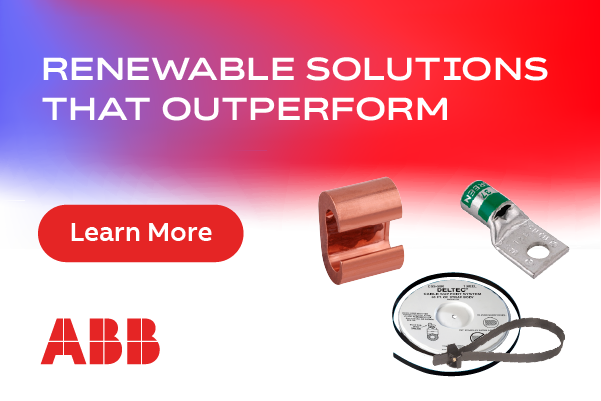IDTechEx Predicts Electric Vehicle Charging Going Zero-Emission, Off-Grid
The new IDTechEx report, "Zero-Emission Electric Vehicle Charging: Off-Grid 2020-2040" examines how the electric vehicle business is finding it profitable to respond to criticism that clean vehicles should not be charged with fossil fuel electricity. The purpose of this 230-page report is to enable materials, component, vehicle and infrastructure suppliers and putative suppliers, and all others in the value chain, to understand this large emerging opportunity for off-grid zero-emission OGZE charging of electric vehicles land, water and airborne.

Off-grid, zero-emission charging is starting to take two basic forms. First is ZE microgrids that are off-grid or capable of being islanded (using the grid as backup called "fringe-of-grid") that charge vehicles - eventually $15 billion in yearly sales on IDTechEx analysis. Second is land and marine vehicles and aircraft progressing to being energy-independent pure-electric vehicles EIEV, another large emerging market. Delightfully, they help each other. For example, cars getting much of their electricity from the new solar bodywork are easier to charge using affordable solar charging stations.
Some readers need a very long-term view so IDTechEx forecasts the technologies and sales from 2020-2040. The methodology of the new research covering over 100 organisations consists mainly of ongoing global visits and interviews by our multi-lingual, PhD level analysts, use of privileged databases including presentations at our own events on the subject. IDTechEx is an independent analyst company located worldwide and with no conflicts of interest.
The executive summary and conclusions presents easily understood, new infograms and graphs revealing off-grid technology options, underlying needs and trends 2020-2040 and which types of EV are suited to OGZE and therefore the primary focus of the report. Learn the types of location matched to the best solutions. Primary conclusions are given for format, chemistry, physics, technology popularity, strategy of photovoltaic leaders, 13 new formats and power electronics 2020-2040. Learn the place of DC microgrids, existing microgrid cost breakdown and action arising. All of this is brought alive by examples of best practice and, given the large off-road opportunity in seven identified industries, the farm, construction site and mine of the future are drawn. Leading solar vehicles are compared and trends explained. Technology roadmap, OGZE charger-microgrid business and solar car business are forecasted 2020-2040.
The introduction covers microgrid design from in-a-box to distributed microgrids and why solar usually wins for vehicle charging stations but new options are added. Understand new wind power and energy independent vehicles. Photovoltaic technologies 2020-2040 are compared in Chapter 3 with silicon winning, single crystal gaining share and identified market niches for other options. Chapter 4 explains why copper indium gallium diselenide is carving one of the largest niches for vehicle charging. Chapter 5 addresses wild cards: 2D semiconductors, quantum dots, rectenna arrays. Chapter 6 closely examines where new PV formats such as thin concrete, solar roads and windows are headed, profiling 15 activities.
Ocean wave power and tidal power in river or sea is now modular and very useful for charging boats, ships, sea-floor mining vehicles and other vehicles near or under the sea so Chapter 7 thoroughly explores this and the progress with tethered drones making electricity with many examples and predictions.
Chapter 8 explains the many containerised microgrids charging EVs. Chapter 9 critically presents examples of ZE microgrids using wind and solar. Chapter 10 does the same for other ZE OG microgrids suitable for vehicle charging then Chapter 11 explains why solar vehicles have become mainstream: land, water, air with examples. The report ends with Chapter 12, "Energy positive ZE and ZE fuel cell vehicles without fuel supply chain".
IDTechEx | www.idtechex.com/research/EV









